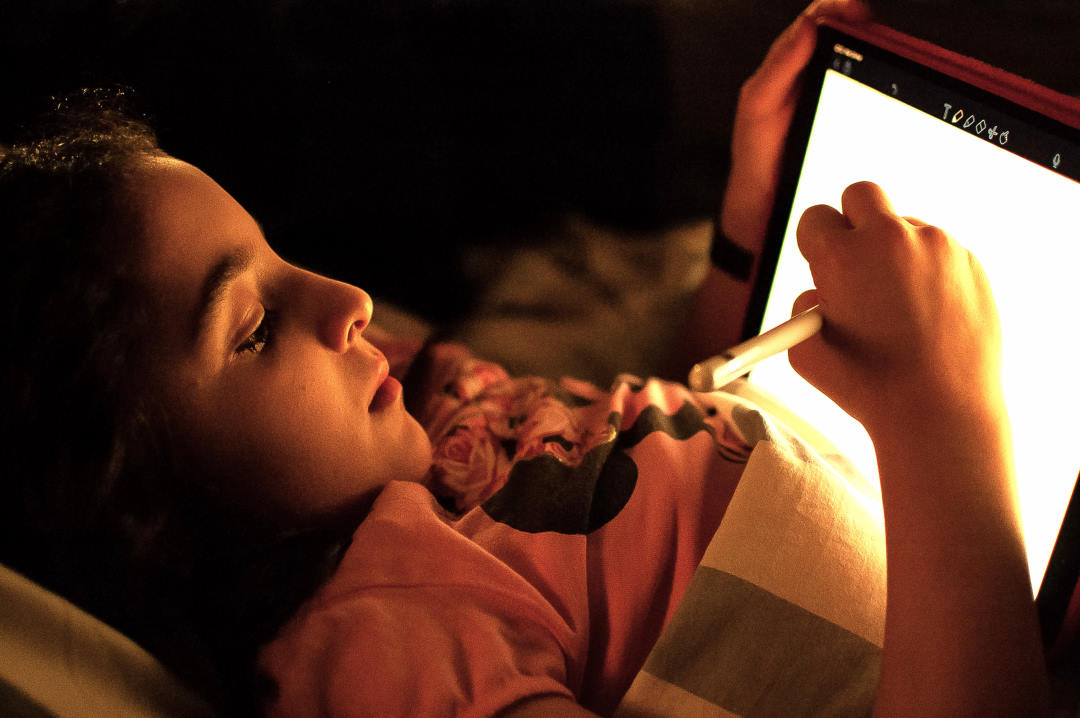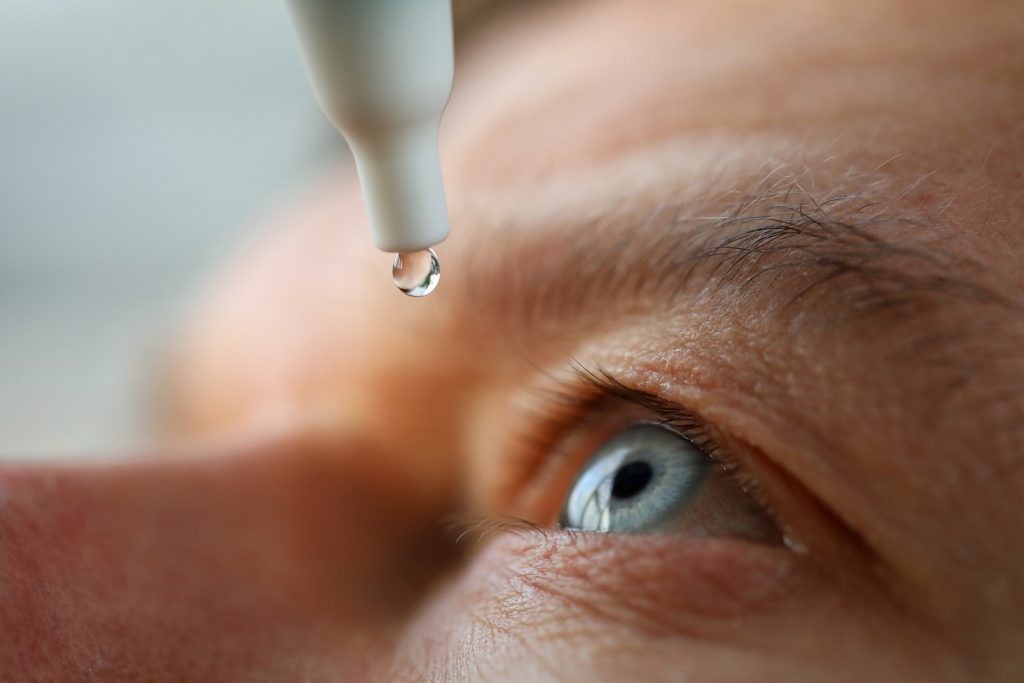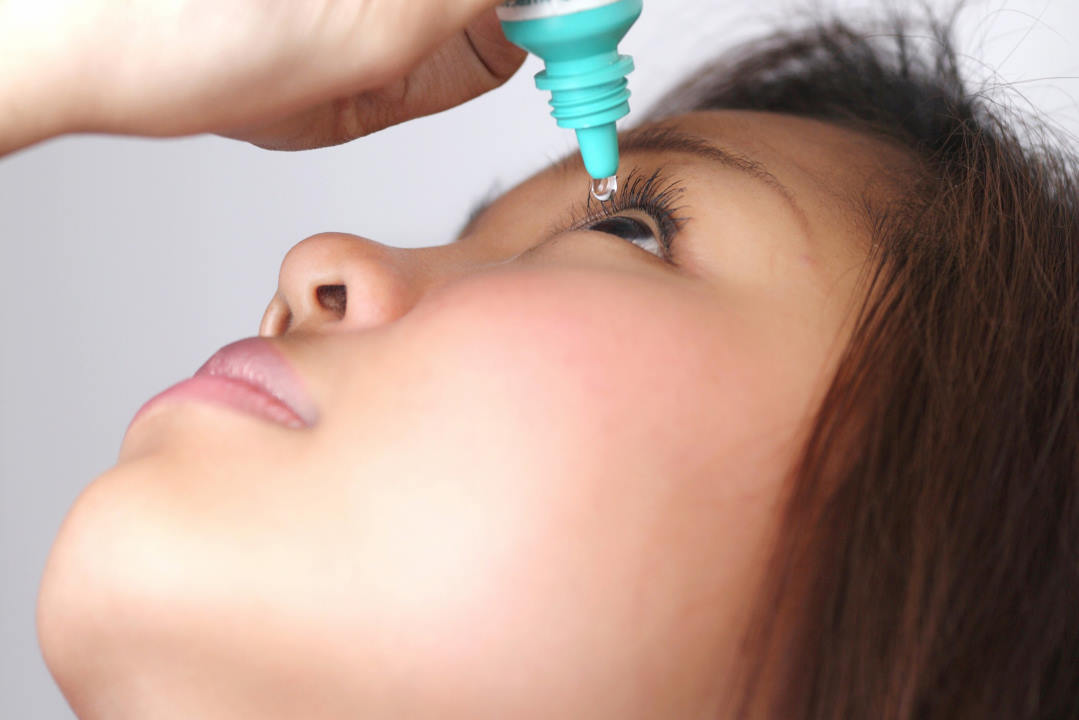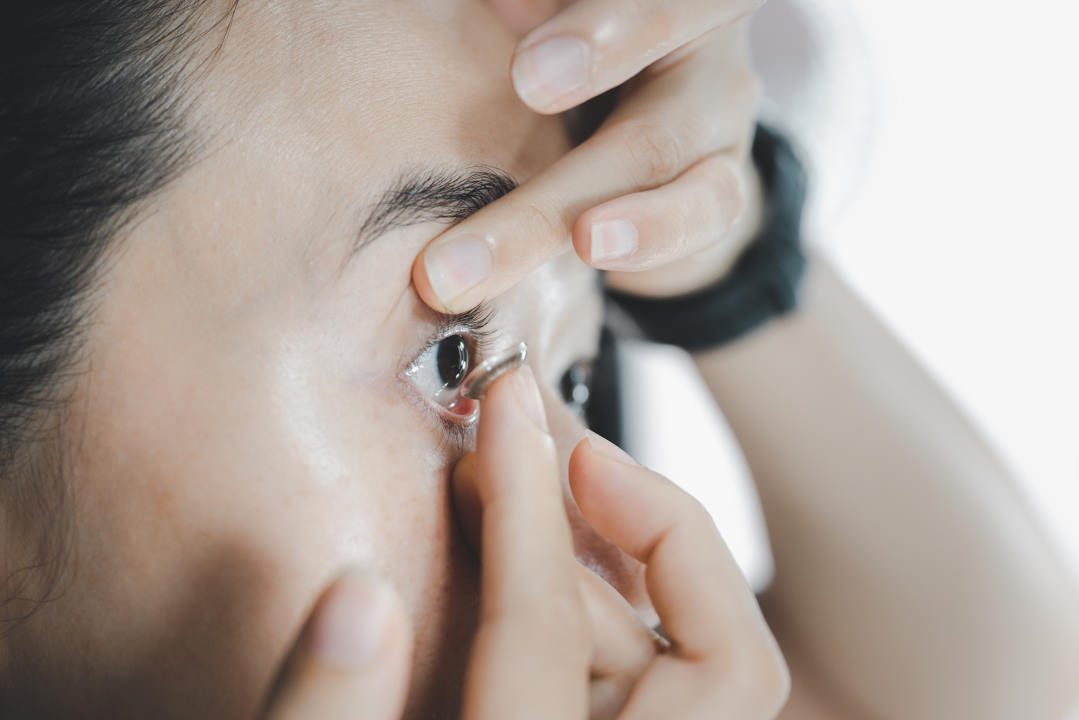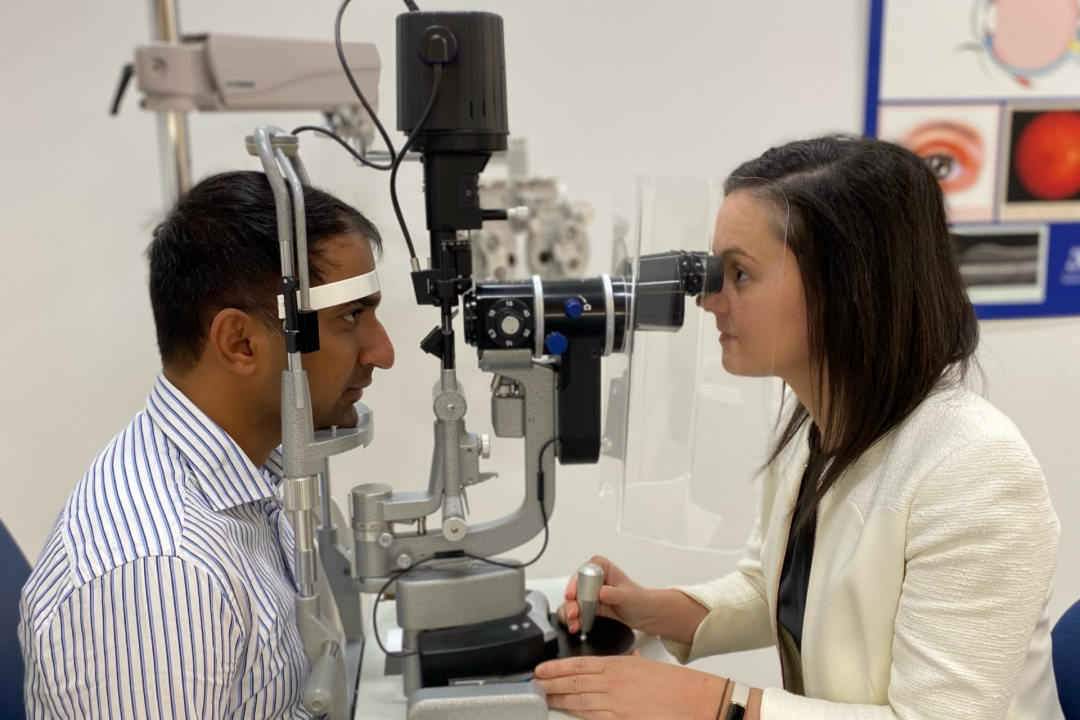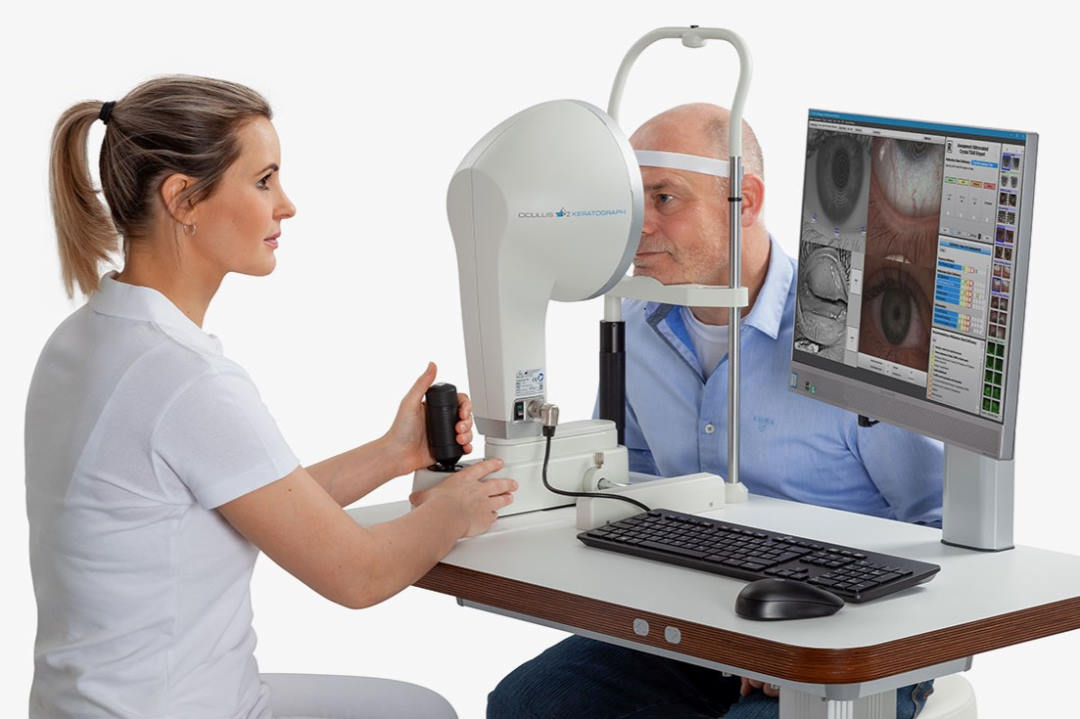A personal perspective on the modern environment’s role in paediatric dry eye
We have seen an increasing number of children and adults with dry eyes. In our opinion, this is due to a cultural shift in behaviours – we used to speak to one another much more, but now we tend to stare at phones, tablets, books, computers and televisions.
Although normative data is not readily available for children, in adults the normal blink rate is 12-171,2 times a minute. During conversation, we increase our blink rate to 26 blinks/min and reduce it to 2-4 times per minute2,3 when staring. We have observed three key behavioural and environmental changes:
- When given a paper document to read, we naturally hold it with our head tilted 20-354 degrees downwards. In this position the palpebral aperture is 6.7mm +/-1.2mm5. In comparison, when a computer is at eye height, the eye is in the primary position and the palpebral aperture is 9.4mm +/-1.3mm. When the eye is gazing at an object 20⁰ upwards – for example, a child sitting in a classroom looking up at a whiteboard – the palpebral aperture is 11.1 +/- 1.4mm and the tear breakup time (TBUT) is significantly shorter.5
- When we read a book, the eye blinks as we turn the pages moving the hand horizontally. However, when we read the same document on a screen and we swipe upwards, we have observed that the blink rate is reduced. We speculate that the blink reflex is stimulated by the hand moving horizontally, which is not stimulated to the same degree with vertical scrolling.
- Air-conditioning installation in classrooms is a New South Wales government initiative6. In our practice we observed increased referrals in line with the installation of air conditioners in surrounding schools. Air-conditioners use refrigerant to remove heat and moisture, dehumidifying the air. It is frequently the child who sits under the air-conditioning vent how is referred with new-onset headaches or blurred vision.
Frequently, the child referred with blurred vision has been prescribed glasses with minimal refractive correction. The child reports that the glasses help. It is my impression that the glasses act as a barrier for the ocular surface to the turbulent air, giving the child a sense of relief. The higher the child must gaze in class, the greater the palpebral aperture size and exposed surface area of the ocular surface.
The history can indicate the likely cause, since blurred vision usually occurs in classes where the child is staring at a board or screen positioned at the child’s primary position or upgaze where the palpebral aperture is wider and the TBUT is shorter. It may also occur when the child engages in gaming, particularly when looking up at the screen.
Classrooms are usually designed with children seated on the floor or low chairs while the teacher writes standing upright. Therefore, the child is staring upwards with a widened palpebral aperture, decreased TBUT and reduced blink rate. The dehumidifying effect of the air-conditioning exacerbates this suboptimal scenario. Though it depends on the class setup, during history-taking, we often find the child has blurred vision in classes where they stare up at the board, such as during maths, but not when they are looking downwards, for example in art class. Furthermore, they don’t have blurred vision at the beginning of the class, but it develops as the class progresses. If the child is made more aware and encouraged to blink more frequently and they are moved away from an air vent or fan, their symptoms often resolve with no other intervention. I may also prescribe a preservative-free eye mist to use on the open eye, which most children can use more easily than eye drops and can be kept in their bags at school.
When considering television viewing, the shift of behaviours may be contributing to the increased prevalence of dry eye in kids. Both the TV and viewing position have changed, increasing the likelihood of dry eye. TVs used to sit on low cabinets allowing the viewer’s palpebral aperture to be narrowed as they looked downwards, compared to today’s mounted TVs which are set at eye level, so the viewer’s eyes are in primary position or in upgaze, increasing palpebral aperture opening and decreasing TBUT. Additionally, the reduced humidity from air-conditioning further compounds the risk and symptoms of dry eye. Before streaming TV, viewers would look away or talk to others during advertisements, increasing blinking. However, the advent of streaming means such viewing breaks are often removed.
Case
An 11-year-old girl was referred with new-onset headaches and blurry vision. Her unaided visual acuity was 6/12-1 in the RE, and 6/12 in the LE. The child had been prescribed +0.50/-0.50@90 OD and +0.25/-0.25@90 OS, but her visual acuity was no better. After instilling lubricants in the clinic, the repeated vision was 6/4.8 in both eyes, unaided. The history revealed that the patient’s class rotates seating positioning every three weeks and the patient had moved to a seat in front of the air-conditioning vent. Once she moved from this position, her symptoms resolved.
The authors would like to thank Dr Kenneth Ooi and Dr Daya Sharma for their input with this article.
References
1. Doughty, M. Consideration of three types of spontaneous eyeblink activity in normal humans: during reading and video display terminal use, in primary gaze, and while in conversation. Optom Vis Sci. 2001;78(10):712-725.
2. Bentivoglio AR, Bressman SB, Cassetta E, et al. Analysis of blink rate patterns in normal subjects. Mov Disord. 1997;12(6):1028-1034.
3. Abusharha AA. Changes in blink rate and ocular symptoms during different reading tasks. Clin Optom (Auckl). 2017;9:133-138.
4. Fiebert I, Kistner F, Gissendanner C, et al. Text neck: An adverse postural phenomenon. Work. 2021;69(4):1261-1270.
5. Pansell T, Porsblad M, Abdi S. The effect of vertical gaze position on ocular tear film stability. Clin Exp Optom. 2007;90(3):176-181.
6. NSW Department of Education, S.I.N.D.o. Air Conditioning. [Web page] 2024 [cited 2024 June 8]; Available from: https://www.schoolinfrastructure.nsw.gov.au/what-we-do/we-look-after-our-schools/air-conditioning.html.

Dr Shanel Sharma is an ophthalmologist at Sydney’s Eye & Laser Surgeons, whose focus is cataract surgery, medical retina, paediatrics, strabismus and Botox for clinical therapy.

Dr Natasha Goh is a junior medical officer who is passionate about pursuing a career in ophthalmology and is in the process of completing her master’s in ophthalmic science with the University of Sydney.









